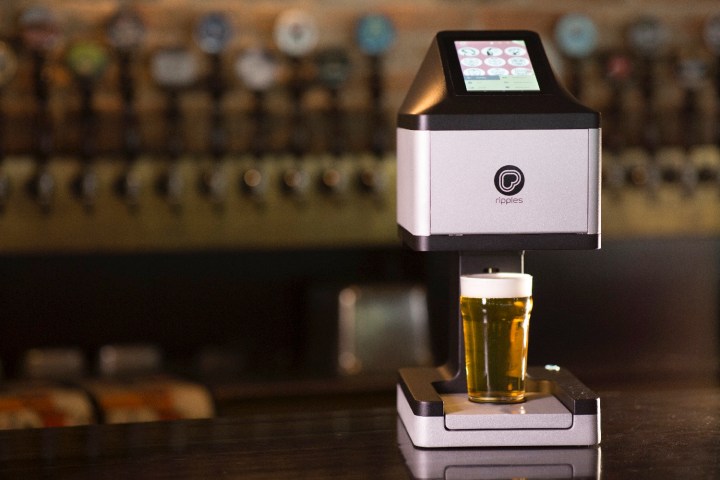There was a time when being able to print using toner or ink on paper seemed like we were living in the future. Nowadays, we’re a lot more jaded. In an age in which it’s even possible to print using living cells, it takes a lot more to impress us. Fortunately, the makers of a new printer have won us over with their latest innovation: The ability to print edible ink directly onto the foam on a frosty glass of beer. Suddenly a pint of Guinness with a simply rendered clover on top just doesn’t cut it!
“Beer Ripples is a revolutionary device that prints beautiful, high-resolution images and messages at the touch of a button, using Ripples’ malt-based ink,” Ripples CEO Yossi Meshulam told Digital Trends. “No special training is needed to operate the device. The Wi-Fi connected, counter-top sized device features a highly intuitive touchscreen system, making Ripples a highly convenient and versatile way to transform a simple drink into a one-of-a-kind experience that keeps customers coming back for more.”

Meshulam said that the Ripple Maker can print any high-resolution image or design. It’s even possible to send a photo, personal image, or message directly to the Beer Ripples device using a mobile app. Perfect for an original proposal method to a would-be spouse — or, perhaps more realistically, for trolling a buddy.
The device will set you back $3,000, plus an annual $1,500 subscription, which comes with enough malt-based ink for 6,000 prints. While that’s not exactly cheap, it’s important to note that it’s aimed at bars and other businesses, as opposed to something everyday consumers are going to have in their homes. When you factor in the kind of great marketing opportunity that it could represent, suddenly that money doesn’t sound so pricey. If you’re not into beer, the company’s technology also makes it possible to print onto frothy lattes, too.
“Companies such as Twitter, Match.com, Mars, Facebook, Google, and IBM have used Ripples to offer an unforgettable, personalized experience at events, where they might share branded images and text to generate a massive, real-time buzz both at the event and on social media,” Meshulam continued.
Let the age of personalized drinks commence!


